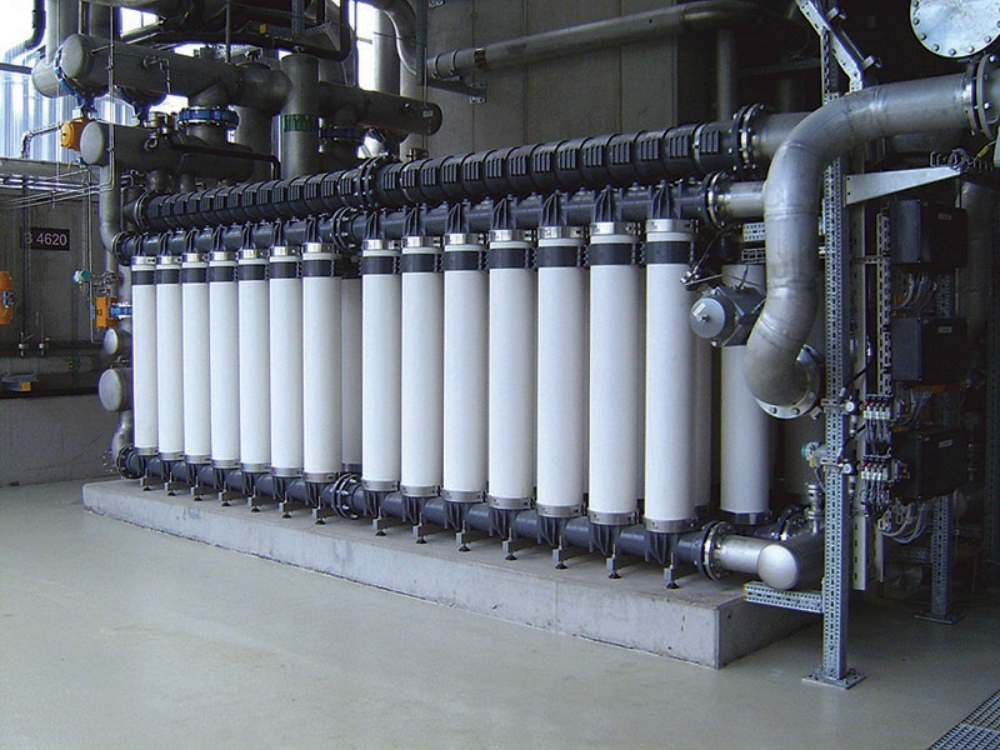Ultrafiltration systems
Superior to sand filters and traditional media filtration
As with most conventional filtration methods, sand filters and
media filtration require consistent raw water quality to deliver
quality effluent, which is not always possible. They also don't
provide an absolute barrier. Traditional media filters typically
remove particles to down to about 5 microns.
Ultrafiltration (UF), however, does not suffer from those
limitations. This technology uses an ultrafiltration membrane
barrier to exclude particles 0.02 to 0.05 microns, including
bacteria, viruses, and colloids, meeting increasingly stringent
water-quality standards around the world, and providing a
stable, reliable, and consistent water quality.
Features
-
High and consistent product quality measured by turbidity (NTU) or silt density index (SDI).
-
Tolerance to feedwater quality upsets.
-
No use of pretreatment chemicals (polymer, coagulant, pH adjustment) and associated costs for sludge disposal.
-
Small footprint and less weight than media filters.
When used as a pretreatment for reverse osmosis (RO) , UF also helps reduce fouling of the RO membranes, which can lead to:
-
Reduced chemical cleaning frequency and consequently, lower operating costs and downtime.
-
The potential to operate RO at higher flux, with fewer membranes and vessels — leading to lower capital cost for the RO system.
Raw or feed water quality
- Max operating temp of 40 degrees
- Up to 100 mg/l total suspended solids(300 NTU)
- 5 - 10 operating pH range




